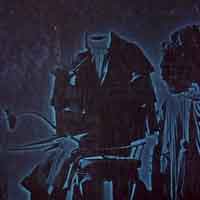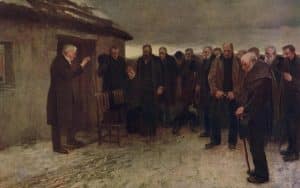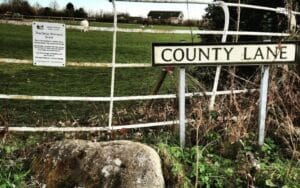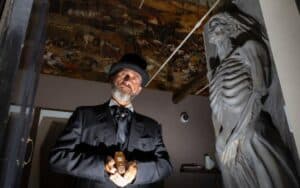Death and funerals are surrounded by folklore and superstition. KATE CHERELL reveals some of the strangest beliefs concerning British funerals…
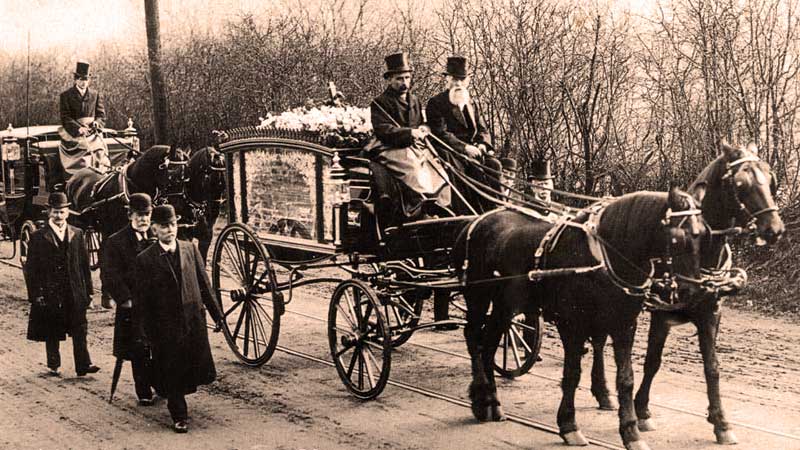
British funeral superstition: Weather
It is said that if a ray of sunshine illuminated a particular person’s face at a funeral, they should put their affairs in order.
To have the sun shine on one’s face was seen as nature’s way of symbolising that you were next to die.
In more cheerful interpretations, if the sun were to brightly shine on the entirety of the funeral party, the deceased would swiftly and surely enter heaven.
Surprisingly, rain during a funeral is said to be good luck.

Again, rain is a symbol that the deceased will go to heaven. If a clap of thunder follows, it was interpreted, especially by the Victorians, that the soul of the deceased has been accepted into heaven.
This belief was so ingrained in British society that popular couplet of the 19th century was,
“Happy is the bride that the sun shines on, happy is the corpse that the rain rains on”.
Odd Numbers
If there were an odd number of people attending a funeral, it was believed that a mourner would soon die as the deceased would be looking for a companion.
Interestingly, in many Asian countries such as China and Hong Kong, odd numbers are similarly unlucky, whether they relate to money or even numbers of flowers in a bouquet!
In Muslim funerals, a body is generally washed three times, but, if the body still requires more cleaning, it has to be washed an odd number of times; never even.
Tying Feet
In many communities, it was seen as essential to tie the feet of the body together with string as soon as the body was prepared for burial.
This would prevent the spirit from returning, wandering elsewhere or leaving to inhabit another body.
A report from Lincolnshire in the 1870s stated that, two weeks after his death, the spirit of a man returned to his family in the form of a huge toad which sat itself on his chair and could not be moved.
A visitor to the family’s home was asked to tie the feet of the toad and bury it under an apple tree in the garden.
Presumably, because tying a toad’s feet together is a rather fiddly and specialist task, the visitor refused, but removed the toad from the house and placed it in a hollow by the apple tree.
It seemed that this was enough for the roaming spirit and the toad did not visit the family again.
Mirrors
Another custom most commonly associated with the Victorians was that of covering mirrors following a death.
In mourning customs, it was commonplace to drape all reflective surfaces with black fabric, but mirrors had special treatment.
Bodies were mostly held in the home for days after a death, so the wellbeing of a soul in the lead up to the funeral was of paramount concern.
It was thought that an uncovered mirror could trap the soul of the deceased and prevent them from entering the afterlife.
Only after the body had left the house and entered the earth could the mirrors finally be revealed to the household.
Warts
In Ireland, warts were thought to be able to be cured by interaction with a passing funeral.
The warty person in question could throw a stone at the deceased’s body in the name of the trinity.
If the angry family didn’t punch you first, saying the deceased’s name while stoning him would force your warts onto the dead body and relieve you of your affliction.
This was never done at the funeral of a close relative. Whether this was through a sudden realisation of bad manners or if a close relative would reject your warts, the superstition is never quite explained.
A less violent alternative was to rub one’s warts as the funeral passed, chanting ‘may these warts and this corpse pass away, and never more return’.
Subsequently, as the body decayed, the warts would similarly shrivel and disappear.
You can find out more about Irish funeral superstitions here.
KATE CHERRELL is a PhD candidate at the University of Lincoln specialising in Gothic Literature and Victorian Mediumship. From this, her research has expanded through to 19th death care, celebration and mourning practice. She is also a collector of Victorian death and memorial artefacts and talks widely on these subjects. She holds a keen interest in cemeteries, memorials and supernatural folklore which she explores within her blog www.burialsandbeyond.com. You can also follow her Facebook page.


